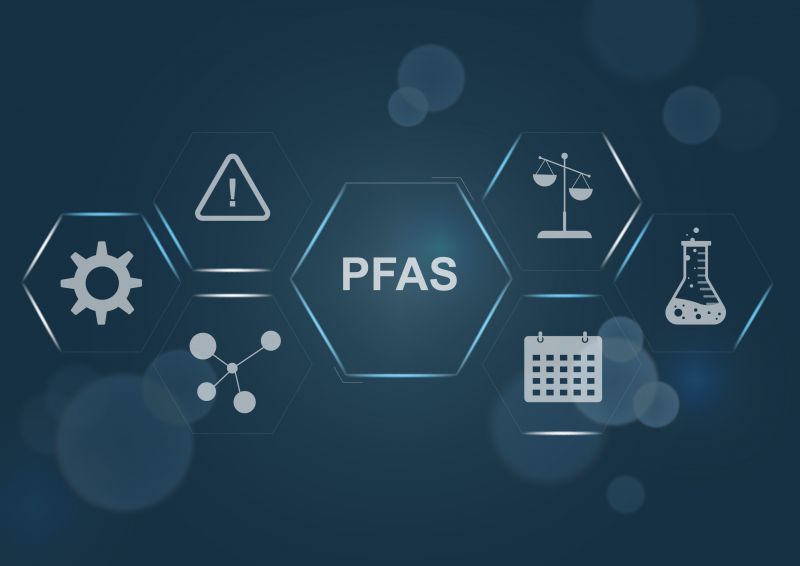PFAS Regulation: What Matters for Fluoropolymers and Gaskets in 2025 PFAS under European Regulatory Review
The ECHA will finalize the PFAS regulation in 2025. What consequences this will have for fluoropolymers and seals – and how IDT is positioning itself.

The regulation of per- and polyfluoroalkyl substances (PFAS) continues to shape Europe’s chemical policy landscape.
Following the publication of the revised ECHA background document on 20 August 2025, it is clear that the debate on scope, transition periods, and technical feasibility remains highly complex.
As a leading sealing technology specialist, IDT is closely engaged in this process — helping to ensure that safety, sustainability, and functionality remain in balance.
What’s New in the PFAS Restriction Process
For the first time, the ECHA background document of 24 June 2025 addresses Sealing Applications as a dedicated sector. This underscores the central role of fluoropolymers (FPs) and perfluoropolyethers (PFPEs) in modern sealing technology.
- Technical indispensability: FPs and PFPEs deliver a unique combination of chemical resistance, temperature and pressure stability, and long-term sealing performance.
- Regulatory options: Transition periods, time-limited exemptions, and an RO3 model with emission control are currently being discussed.
- Alternatives: Hydrocarbon elastomers such as HNBR, NBR, or ACM can only partially meet performance requirements.
- Emissions: Estimated annual PFAS emissions from sealing applications (2020 baseline): 352 – 651 t.
The Three Restriction Options Explained
To clarify the potential regulatory approaches, ECHA has proposed three scenarios:
- RO1 – Complete ban
The most restrictive option. All PFAS uses would be prohibited after a transition period. Industry regards this as economically and technically unfeasible. - RO2 – Ban with exemptions
The current reference scenario. PFAS use would generally be restricted, but specific, time-limited exemptions would apply to certain sectors, including sealing applications.
For industrial gaskets, a 12-year exemption is under discussion, alongside an 18-month transition period. - RO3 – Controlled industrial use
Allows continued PFAS use in industrial settings under strict conditions. Closed systems, advanced emission controls, and recycling rates up to 95 %.
This model seeks to enable safe use where no viable alternatives exist.
Industry Position
In its 6 October 2025 position paper (Source), the BDI calls for a fundamental course correction:
A blanket ban on all PFAS without a differentiated risk assessment jeopardizes the innovative strength, competitiveness, and security of supply of European industry.
Key demands include:
- Risk-based regulation in line with Article 68 REACH
- A full exemption for fluoropolymers to reduce regulatory complexity
- A review mechanism to extend exemptions where needed
- Planning certainty for R&D and supply chains
Important Dates
October 30, 2025
ECHA Webinar: Consultation on PFAS Draft Opinion – Guidance for Respondents
Online | 11:00 – 13:00 EET (equivalent to 10:00 – 12:00 CET)
In this webinar, ECHA will outline the ongoing consultation process and explain how stakeholders can effectively contribute their input.
About the event
December 10, 2025
REACH-CLP-Biocides Helpdesk – Online Event on the SEAC Consultation
Approx. 3 hours | including Q&A sessions
This information session offers a comprehensive update on the background document and the upcoming SEAC consultation, focusing on socio-economic evaluation and industrial implications.
Registration opens on October 27, 2025.
Expert Insight #
The latest background document makes one thing clear: PFAS remain essential in many sealing applications. Now the focus must be on industry and regulators working together to develop a risk-based, practical pathway that balances safety, environmental protection, and operational reliability.
FAQs: PFAS and Sealing Applications #
No final decision has been taken. The proposal is still under review by ECHA committees; final regulation is not expected before 2027.
Not yet. No other material offers the same combination of durability, stability, and low friction.
Usually it means no intentionally added PFAS. Total absence is analytically difficult to prove.
No, PTFE is itself a fluoropolymer and therefore part of the PFAS group by definition.
Yes, if they contain no fluorinated additives. PFAS-free solutions are viable for less demanding applications.
They remain under discussion. Current proposals include sector-specific exemptions such as a possible 12-year period (RO2) for industrial gaskets.
These are the three Restriction Options under discussion:
- RO1: Complete ban without exceptions
- RO2: Ban with defined exemptions (e.g., industrial gaskets – 12 years under discussion)
- RO3: Continued use under strict emission controls (e.g., ≥ 95 % recycling rate)
The debate currently centers on a blend of RO2 and RO3 — a ban with clear exemptions and tight industrial controls.
Substitution potential remains low. Existing safety and performance standards are hard to meet with alternative materials.
Stricter limits and higher recycling targets (up to 95 %) are under discussion within the RO3 framework.
- Take part in ECHA consultations and webinars
- Provide technical data and cost assessments
- Engage with industry associations and supply partners
- Start testing and validating substitute materials early
PFAS Expertise in Regulation, Application, and Materials
IDT actively participates in European consultations, contributes technical data, and helps customers anticipate and manage regulatory developments.
Our approach combines practical solutions, evidence-based insight, and open dialogue between technology and regulation — ensuring a safe and sustainable future for sealing technology.